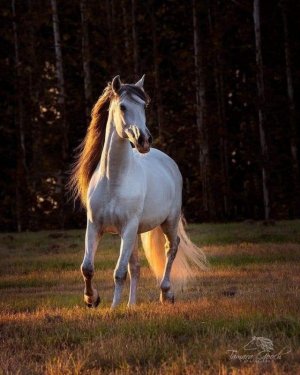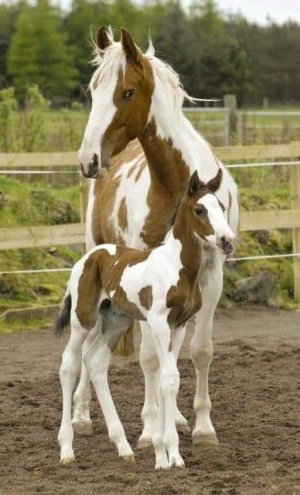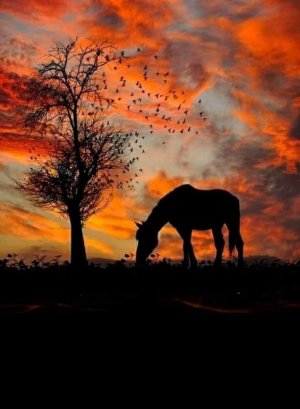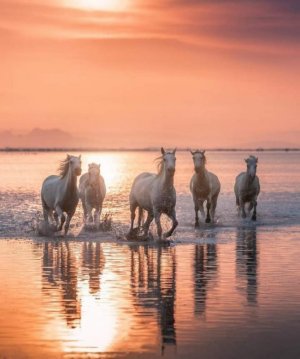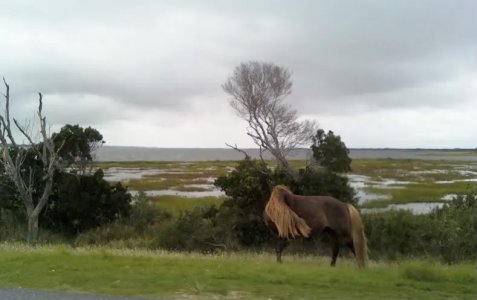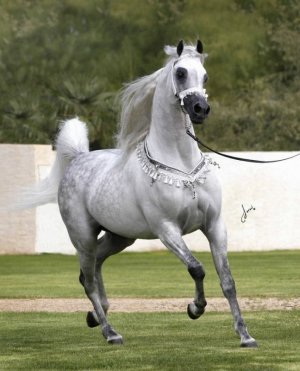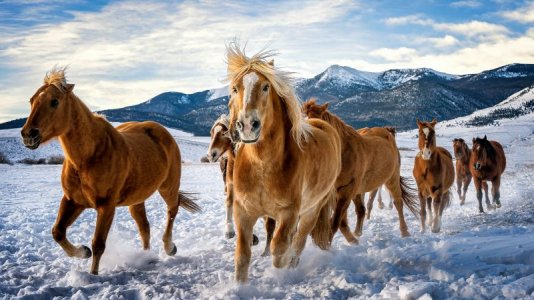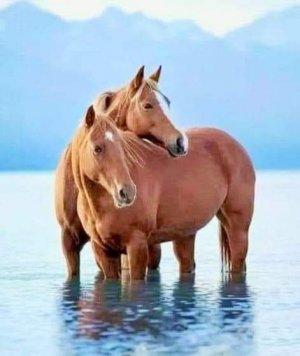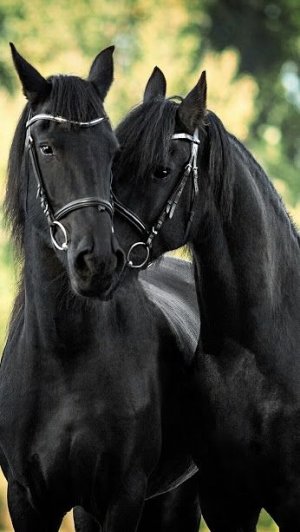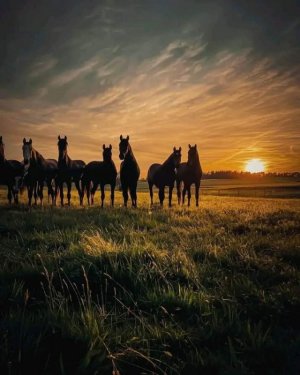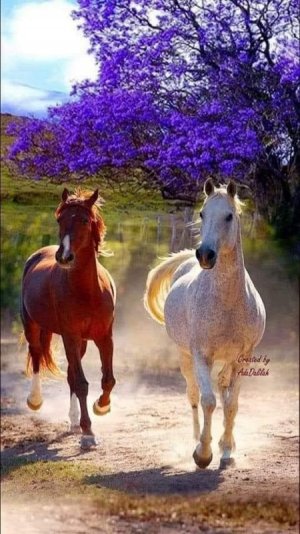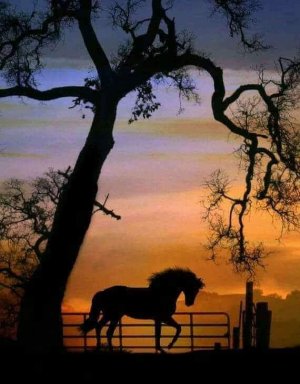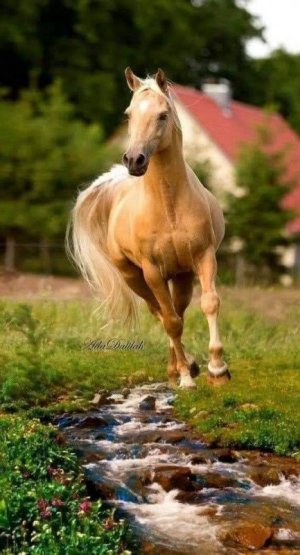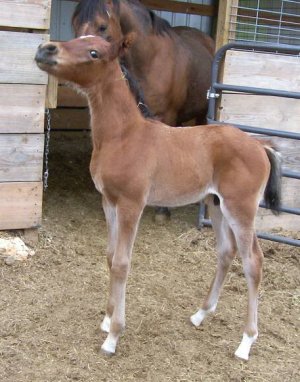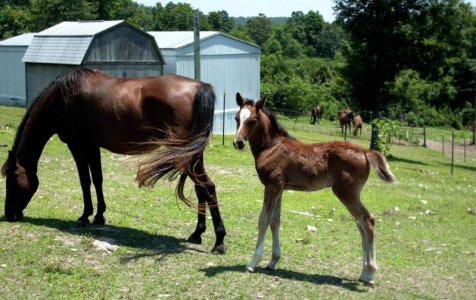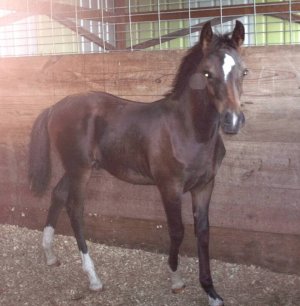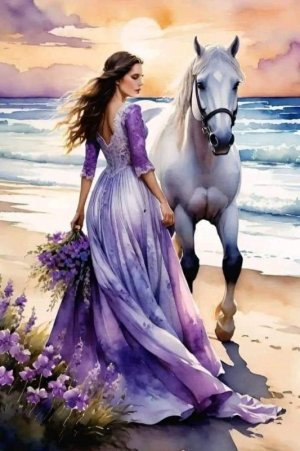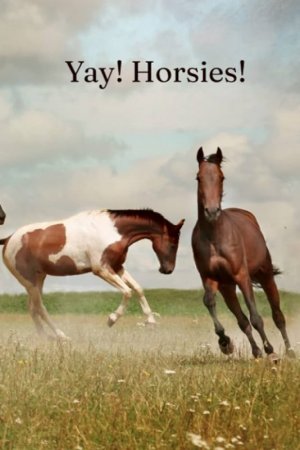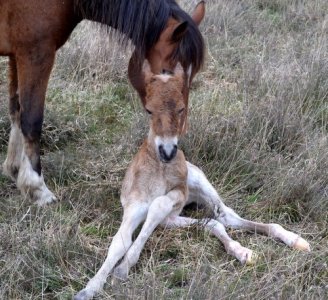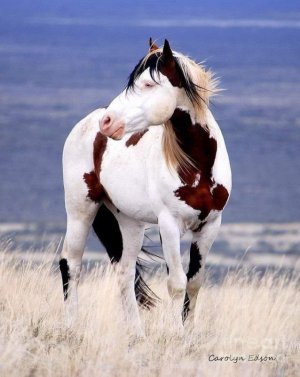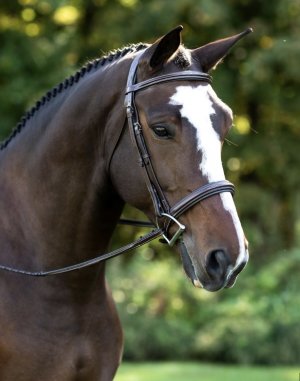You are using an out of date browser. It may not display this or other websites correctly.
You should upgrade or use an alternative browser.
You should upgrade or use an alternative browser.
Everything Horsies
- Thread starter Ruthanne
- Start date
hollydolly
SF VIP
- Location
- London England
I know this is old so apologies for the quality, and some of you will have seen it before.. but it always brings a lump to my throat
There were 7 woman critical to the rescue One woman risked her life cutting fence in neck high water and contacting authorities. Then there were the 6 women (ages 19-40) who rode that day and were honored by their government for their bravery and courage for riding into frigid flood waters that had hidden ditches, strewn with broken fencing and other hazards.
One woman (Norma) began the rescue before the authorities could mobilize knowing there would not be time. She held a drowning foal in her arms as it died the first day, trapped by the wire under the water. She was one woman, 40 years old trying to save those she could waiting for help. She waded into the frigid water neck deep to cut the barb wire with bolt cutters to allow the horses escape to higher ground. During the first 2 days she fought to get the horses fresh water so they would not drink the salt water.
She held sickened horses as they died. She would not relent on the authorities. She fought authorities to think outside the box. She offered to ride her own horse to lead the stranded they had "better ideas". It was them against one horsewoman.
Finally with the international press taking the story and the authorities failed efforts, November 3rd , 2006 the other riders came on the scene. They were fresh and public opinion over ruled. Norma exhausted and becoming ill (eventually pneumonia) was still there the day of the ride out with her trailer to help transport them on her third day of hell.
She is an unknown and unsung hero. I'm sure there were others as well who were never recognized for the bravery because it was not captured dramatically on camera. I give gratitude and recognition to Norma, a true horsewoman and hero. The Riders came on the third day as again the waters were due to rise with the next storm.
This next storm would be the horses end. The horses caught by the flooding were weakening and many were showing signs of giving up. The nature of the horse herd kept them from trying to save themselves. For three days the media broadcasted the unsuccessful attempts to rescue them. Then a post appeared on the Friesian horse forum: "horses and riders sought.....Only experienced riders with horses without fear of water" could try the idea of leading them off the small mound of land. They would meet the next day and the video is what they accomplished by risking themselves and their horses.
There were 7 woman critical to the rescue One woman risked her life cutting fence in neck high water and contacting authorities. Then there were the 6 women (ages 19-40) who rode that day and were honored by their government for their bravery and courage for riding into frigid flood waters that had hidden ditches, strewn with broken fencing and other hazards.
One woman (Norma) began the rescue before the authorities could mobilize knowing there would not be time. She held a drowning foal in her arms as it died the first day, trapped by the wire under the water. She was one woman, 40 years old trying to save those she could waiting for help. She waded into the frigid water neck deep to cut the barb wire with bolt cutters to allow the horses escape to higher ground. During the first 2 days she fought to get the horses fresh water so they would not drink the salt water.
She held sickened horses as they died. She would not relent on the authorities. She fought authorities to think outside the box. She offered to ride her own horse to lead the stranded they had "better ideas". It was them against one horsewoman.
Finally with the international press taking the story and the authorities failed efforts, November 3rd , 2006 the other riders came on the scene. They were fresh and public opinion over ruled. Norma exhausted and becoming ill (eventually pneumonia) was still there the day of the ride out with her trailer to help transport them on her third day of hell.
She is an unknown and unsung hero. I'm sure there were others as well who were never recognized for the bravery because it was not captured dramatically on camera. I give gratitude and recognition to Norma, a true horsewoman and hero. The Riders came on the third day as again the waters were due to rise with the next storm.
This next storm would be the horses end. The horses caught by the flooding were weakening and many were showing signs of giving up. The nature of the horse herd kept them from trying to save themselves. For three days the media broadcasted the unsuccessful attempts to rescue them. Then a post appeared on the Friesian horse forum: "horses and riders sought.....Only experienced riders with horses without fear of water" could try the idea of leading them off the small mound of land. They would meet the next day and the video is what they accomplished by risking themselves and their horses.
Lewkat
Senior Member
- Location
- New Jersey, USA
This made me cry.I know this is old so apologies for the quality, and some of you will have seen it before.. but it always brings a lump to my throat
There were 7 woman critical to the rescue One woman risked her life cutting fence in neck high water and contacting authorities. Then there were the 6 women (ages 19-40) who rode that day and were honored by their government for their bravery and courage for riding into frigid flood waters that had hidden ditches, strewn with broken fencing and other hazards.
One woman (Norma) began the rescue before the authorities could mobilize knowing there would not be time. She held a drowning foal in her arms as it died the first day, trapped by the wire under the water. She was one woman, 40 years old trying to save those she could waiting for help. She waded into the frigid water neck deep to cut the barb wire with bolt cutters to allow the horses escape to higher ground. During the first 2 days she fought to get the horses fresh water so they would not drink the salt water.
She held sickened horses as they died. She would not relent on the authorities. She fought authorities to think outside the box. She offered to ride her own horse to lead the stranded they had "better ideas". It was them against one horsewoman.
Finally with the international press taking the story and the authorities failed efforts, November 3rd , 2006 the other riders came on the scene. They were fresh and public opinion over ruled. Norma exhausted and becoming ill (eventually pneumonia) was still there the day of the ride out with her trailer to help transport them on her third day of hell.
She is an unknown and unsung hero. I'm sure there were others as well who were never recognized for the bravery because it was not captured dramatically on camera. I give gratitude and recognition to Norma, a true horsewoman and hero. The Riders came on the third day as again the waters were due to rise with the next storm.
This next storm would be the horses end. The horses caught by the flooding were weakening and many were showing signs of giving up. The nature of the horse herd kept them from trying to save themselves. For three days the media broadcasted the unsuccessful attempts to rescue them. Then a post appeared on the Friesian horse forum: "horses and riders sought.....Only experienced riders with horses without fear of water" could try the idea of leading them off the small mound of land. They would meet the next day and the video is what they accomplished by risking themselves and their horses.
hollydolly
SF VIP
- Location
- London England
I have watched this Video for the better part of 17 years , and can never watch without getting emotional...This made me cry.
katlupe
SF VIP
- Location
- Norwich, NY
So beautiful!
katlupe
SF VIP
- Location
- Norwich, NY
oldaunt
professional hermit
Lethe200
Senior Member
- Location
- San Francisco Bay Area
The Turkish Akhal Teke - often called "the most beautiful horse in the world", due to its amazing, almost iridescent coat.
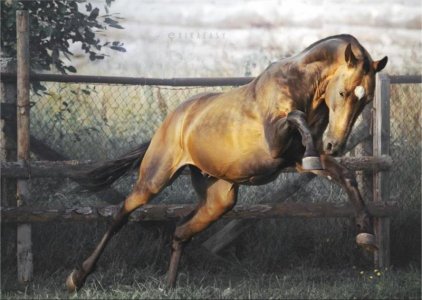
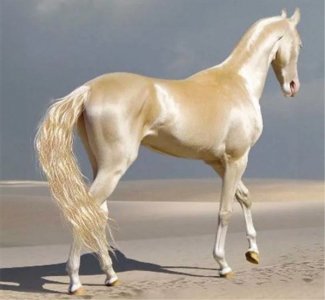
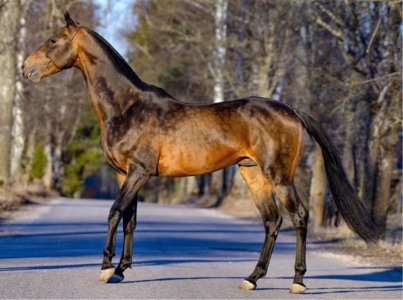
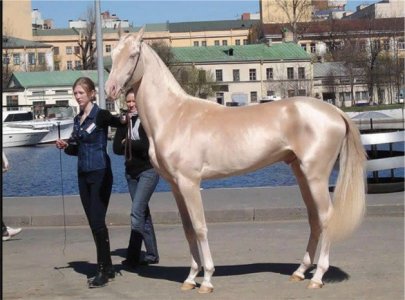
The History And Origin Of The Akhal Teke
https://www.akhalteke.com.au/the-breed
(excerpt from the free link, above)
There is conjecture over the pronunciation of Akhal Teke. Some prefer A-hal (where the “k” is silent) while in the US, many pronounce it A-Kal to rhyme with jackal. Teke is pronounced Te-kee. Akhal Tekes are believed to be one of the oldest horse breeds in the world, some say the precursor to both the Thoroughbred and Arabian. Ancestors of the breed may date back to animals living more than 3,000 years ago, known as the Nisean horse.
The precise ancestry is difficult to trace due to a lack of records, and that prior to around 1600AD horse breeds in the modern sense did not exist; rather, horses were identified by local strain or type. According to one theory of origin, the Akhal Teke were kept hidden by tribesmen in the area where the breed first appeared, the Turkmenistan desert Kara Kum, which is a rocky flat desert, surrounded by Kopet Dag mountains on the border or Iran and Russia. Horses were prized and often stolen by enemies, hence the secrecy.
“The Akhal Teke is one of the oldest horse breeds in the world. It represents the purest version of the Turkmen horse and is a direct descendant of the famed Central Asian mounts of antiquity: the horses of the Massagetae, the Niseans, and the Parthians.”
The Akhal Teke breed has not changed in conformation for many centuries. Throughout its history the Akhal Teke has been pure bred, and due to war and conflict, remains a rare and endangered breed with less than 7,000 horses world wide.The Turkmen considered their horses members of the family and kept strict oral records of their breeding. A solitary life with humans is in their blood, as nomadic tribes in Turkmenistan would tether a single stallion to their tent as the mare and foal ran free.
It is believed Genghis Khan and his armies rode Akhal Tekes across Asia and Europe, as did Alexander the Great. Prior to the Russian occupation of 1917, nearly every Turkmen family owned at least one or two horses, but in an effort to stifle all opposition, Turkmen were separated from their horses. The Russians considered the horses as a main tool of rebellion. Private ownership ended, and the horses were placed in State-owned stud farms.
The breed further suffered when the Soviet Union required horses to be slaughtered to feed the Russian people in the 1960s and 70s. Local Turkmen refused to eat them and some people released their beloved horses into the Kara Kum desert to save them. At the beginning of 1970 there were only 200 breeding mares in Turkmenistan.
Upon achieving independence in 1991, the government of Turkmenistan defined horse breeding as a nationalistic concern and art form. The Akhal Teke has been declared a national treasure and its image graces the State Seal of the country. Turkmenistan has banned their export. They may only leave as a gift to the Head of another State.




The History And Origin Of The Akhal Teke
https://www.akhalteke.com.au/the-breed
(excerpt from the free link, above)
There is conjecture over the pronunciation of Akhal Teke. Some prefer A-hal (where the “k” is silent) while in the US, many pronounce it A-Kal to rhyme with jackal. Teke is pronounced Te-kee. Akhal Tekes are believed to be one of the oldest horse breeds in the world, some say the precursor to both the Thoroughbred and Arabian. Ancestors of the breed may date back to animals living more than 3,000 years ago, known as the Nisean horse.
The precise ancestry is difficult to trace due to a lack of records, and that prior to around 1600AD horse breeds in the modern sense did not exist; rather, horses were identified by local strain or type. According to one theory of origin, the Akhal Teke were kept hidden by tribesmen in the area where the breed first appeared, the Turkmenistan desert Kara Kum, which is a rocky flat desert, surrounded by Kopet Dag mountains on the border or Iran and Russia. Horses were prized and often stolen by enemies, hence the secrecy.
“The Akhal Teke is one of the oldest horse breeds in the world. It represents the purest version of the Turkmen horse and is a direct descendant of the famed Central Asian mounts of antiquity: the horses of the Massagetae, the Niseans, and the Parthians.”
The Akhal Teke breed has not changed in conformation for many centuries. Throughout its history the Akhal Teke has been pure bred, and due to war and conflict, remains a rare and endangered breed with less than 7,000 horses world wide.The Turkmen considered their horses members of the family and kept strict oral records of their breeding. A solitary life with humans is in their blood, as nomadic tribes in Turkmenistan would tether a single stallion to their tent as the mare and foal ran free.
It is believed Genghis Khan and his armies rode Akhal Tekes across Asia and Europe, as did Alexander the Great. Prior to the Russian occupation of 1917, nearly every Turkmen family owned at least one or two horses, but in an effort to stifle all opposition, Turkmen were separated from their horses. The Russians considered the horses as a main tool of rebellion. Private ownership ended, and the horses were placed in State-owned stud farms.
The breed further suffered when the Soviet Union required horses to be slaughtered to feed the Russian people in the 1960s and 70s. Local Turkmen refused to eat them and some people released their beloved horses into the Kara Kum desert to save them. At the beginning of 1970 there were only 200 breeding mares in Turkmenistan.
Upon achieving independence in 1991, the government of Turkmenistan defined horse breeding as a nationalistic concern and art form. The Akhal Teke has been declared a national treasure and its image graces the State Seal of the country. Turkmenistan has banned their export. They may only leave as a gift to the Head of another State.
Myra
Member
- Location
- Marysville, Kansas
horseless carriage
Well-known Member
katlupe
SF VIP
- Location
- Norwich, NY


